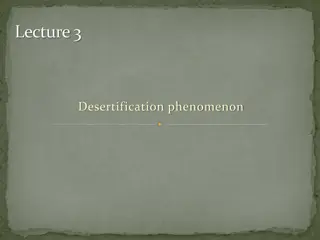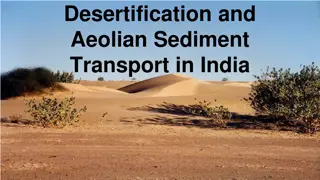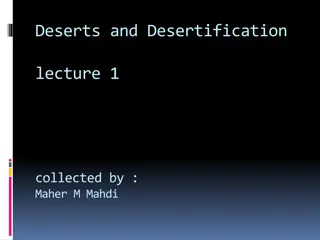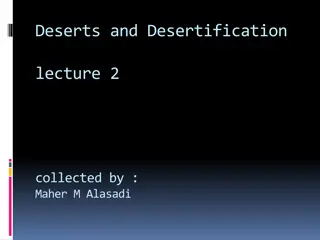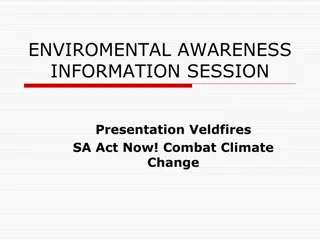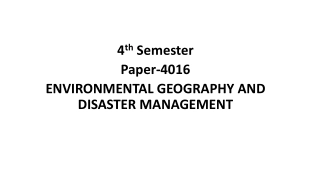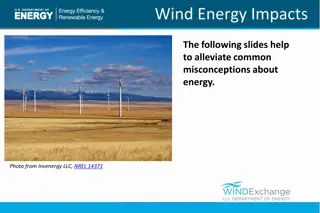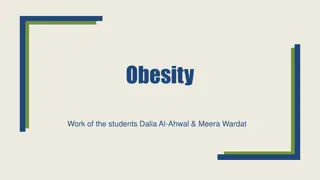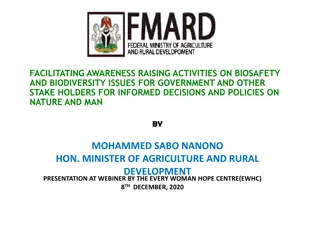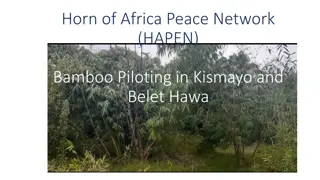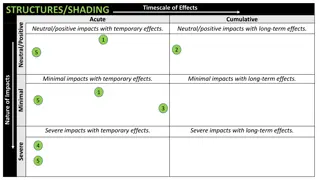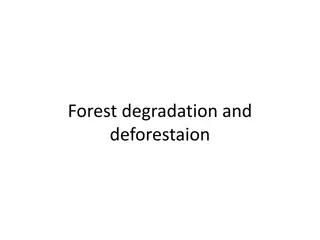Understanding Desertification: Causes, Impacts, and Management Strategies
Desertification is a pressing environmental issue caused by factors like deforestation, climate change, overgrazing, and urbanization. It leads to land degradation, loss of biodiversity, and increased vulnerability to natural disasters. The impacts extend to economic and social spheres as well, threatening agricultural productivity, increasing poverty, and reducing overall economic output. Effective management strategies are crucial to combat desertification and preserve the future of our land resources.
Download Presentation

Please find below an Image/Link to download the presentation.
The content on the website is provided AS IS for your information and personal use only. It may not be sold, licensed, or shared on other websites without obtaining consent from the author. Download presentation by click this link. If you encounter any issues during the download, it is possible that the publisher has removed the file from their server.
E N D
Presentation Transcript
B.A 4thsemester Paper-4016 Environmental geography and disaster management
DESERTIFICATION Recently, the World Day to Combat Desertification and Drought was observed on June 17th. The theme for 2019 is Let s Grow the Future Together to encourage people against depleting the land of its inbuilt resources. What is Desertification? Desertification is the process by which the biological productivity of drylands (arid and semiarid lands) is reduced due to natural or manmade factors. It does not mean the expansion of existing deserts. Causes for Desertification Man-Made Causes: Overgrazing It reduces the usefulness, productivity, and biodiversity of the land.India lost 31% of grasslands between 2005 and 2015.
Deforestation A forest acts as a carbon sink. Deforestation releases carbon dioxide back into the atmosphere contributing to the greenhouse effect. Farming Practices Slash and burn agriculture exposes state to soil erosion hazards Heavy tilling and overirrigation disturbs mineral composition of the soil. Urbanization As urbanization increases, the demand for resources increases drawing more resources and leaving lands that easily succumb to desertification.
Climate Change It may exacerbate desertification through alteration of spatial and temporal patterns in temperature, rainfall, solar radiation and winds. Overexploitation of Resources Increasing demand for land resources due to issues like overpopulation leaves land vulnerable to desertification Natural Causes: Natural Disasters Natural Disasters like Floods, Droughts, landslides results into Water Erosion Displacement of fertile soil. Water erosion It results into Badland Topography which itself is an initial stage of desertification.
Wind Erosion Sand encroachment by wind reduces fertility of the soil making the land susceptible to desertification Impacts of Desertification Environmental impacts: Destruction of Vegetation Soil infertility Increased soil erosion Increased vulnerability to natural disasters Land degradation Water pollution Loss of biodiversity & extinction of species
Economical impacts: Increased occurrences of natural hazards like, Floods Landslides Draughts Threatens agricultural productivity. Repercussive impacts increase poverty. Overall productivity of the economy decreases Social Impacts: Rise of famine, poverty, social conflicts Forces mass migrations i.e. environmental migration. Food Security Issues Political Impacts: Repercussive impacts also lead to political instability
Global Efforts to Prevent Desertification The Bonn Challenge: To bring 150 million hectares of the world s deforested and degraded land into restoration by 2020, and 350 million hectares by 2030. Goal 15 of Sustainable Development Goals (SDG), 2030: It declares that we are determined to protect the planet from degradation, including through sustainable consumption and production. United Nations Convention to Combat Desertification (UNCCD): It was established in 1994, the sole legally binding international agreement linking environment and development to sustainable land management. The World Day to Combat Desertification and Drought is observed every year on 17thJune. Great Green Wall: Initiative by Global Environment Facility (GEF), where eleven countries in Sahel-Saharan Africa have focused efforts to fight against land degradation and revive native plant life to the landscap Steps To Be Taken Sustainable Land Use Protection of vegetative cover which would prevent soil erosion Alternative Farming and Industrial Techniques
Establish economic opportunities outside drylands The practice of Sustainable Agriculture The practice of Eco Forestry made to be regular Use of recycled paper Raise awareness about Desertification Ending desertification is the best chance the world has to stabilize the effects of climate change, save wildlife species and protect our well-being. Protecting the forest is our mutual responsibility, which should be carried out by people and governments worldwide.


